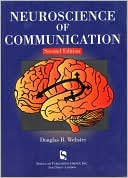Category Books
- Fiction Books & Literature
- Graphic Novels
- Horror
- Mystery & Crime
- Poetry
- Romance Books
- Science Fiction & Fantasy
- Thrillers
- Westerns
- Ages 0-2
- Ages 3-5
- Ages 6-8
- Ages 9-12
- Teens
- Children's Books
- African Americans
- Antiques & Collectibles
- Art, Architecture & Photography
- Bibles & Bible Studies
- Biography
- Business Books
- Christianity
- Computer Books & Technology Books
- Cookbooks, Food & Wine
- Crafts & Hobbies Books
- Education & Teaching
- Engineering
- Entertainment
- Foreign Languages
- Game Books
- Gay & Lesbian
- Health Books, Diet & Fitness Books
- History
- Home & Garden
- Humor Books
- Judaism & Judaica
- Law
- Medical Books
- New Age & Spirituality
- Nonfiction
- Parenting & Family
- Pets
- Philosophy
- Political Books & Current Events Books
- Psychology & Psychotherapy
- Reference
- Religion Books
- Science & Nature
- Self Improvement
- Sex & Relationships
- Social Sciences
- Sports & Adventure
- Study Guides & Test Prep
- Travel
- True Crime
- Weddings
- Women's Studies
Neuroscience of Communication » (2nd Edition)

Authors: Douglas B. Webster
ISBN-13: 9781565939851, ISBN-10: 1565939859
Format: Paperback
Publisher: Cengage Learning
Date Published: August 1998
Edition: 2nd Edition
Author Biography: Douglas B. Webster
Webster, Douglas B., PhD (Louisiana State Univ)
Book Synopsis
Following a very successful first edition, Neuroscience of Communication, 2E has been revised and updated and is one step ahead of its predecessor. It continues to provide readers with a deep understanding and lively untellectual curiosity of the brain and how it works. Chapter summaries are included and each chapter has a "study guide" of pertinent questions to help the users review. Marginal notes and boxes are included throughout the text and important terms are printed in bold-faced type and indexed. Many of the discussions have been clarified or expanded and Chapter Four in the first edition is now two chapters in the second edition. Also included are 14 new illustrations and a new chapter on sensory systems.
Christine Sapienza
This book provides information and reference to neuroanatomical and neuroscientific issues related to communication science and communication disorders. The purpose is to provide a usable neuroscience textbook for a one-semester course for undergraduate and graduate students majoring in communication sciences. This is a necessary book for both graduate and undergraduate education. It meets the author's objectives. It is written for undergraduate and graduate students in communication sciences and/or communication sciences and disorders. The book covers the fundamental neuroanatomical substrates involved in sensory and motor control. There is attention to the areas of language organization and the central and peripheral processes involved in speech production. There are no innovative techniques or strategies adopted by the author for the presentation of the material, yet it is conveyed in a well organized, well thought out design that will take a student from the fundamental issues of neuroanatomy through the functional consequences of neuroanatomical/ neurophysiological disease. At the end of each chapter the author provides a study guide for the student which includes short essay and multiple choice questions. The only drawback to the book is the illustrations; they are simplistically done. This book is a worthy resource for those teaching an undergraduate course in neuroanatomy. It is a very uncomplicated book for the student to read and enjoy and will make a contribution to the field of speech-language pathology as a primary or complementary book for a neuroanatomy course. It compares very well to other commonly used neuroanatomy textbooks geared for programs inspeech-language pathology or medicine.
Table of Contents
| Preface | ||
| Ch. 1 | Introduction and Historical Perspectives | 3 |
| Ch. 2 | Nerve Cells and Muscles | 25 |
| Ch. 3 | Gross Anatomy and Blood Supply of the Brain | 59 |
| Ch. 4 | Internal Organization of the Central Nervous System | 93 |
| Ch. 5 | Vestibular System | 139 |
| Ch. 6 | Peripheral Auditory System | 165 |
| Ch. 7 | Central Auditory System | 203 |
| Ch. 8 | Cortical Organization and Speech Reception | 239 |
| Ch. 9 | The Organization of Language | 261 |
| Ch. 10 | Speech Production | 281 |
| Index | 305 |
Subjects
 Media
Media  Communications - General & Miscellaneous
Communications - General & MiscellaneousMedical Books
 Medicine
Medicine  Basic Sciences
Basic SciencesNonfiction
 Philosophy
Philosophy  Linguistics & Semiotics
Linguistics & SemioticsNonfiction
 Social Sciences
Social Sciences  Media & Communications
Media & CommunicationsPhilosophy
 Linguistics & Semiotics
Linguistics & Semiotics  Psycholinguistics & Language Acquisition
Psycholinguistics & Language AcquisitionScience & Nature
 Social Sciences
Social Sciences  Media & Communications
Media & CommunicationsScience & Nature
 All Science & Nature
All Science & Nature  Biology & Life Sciences
Biology & Life SciencesSocial Sciences
 Media & Communications
Media & Communications  Communications - General & Miscellaneous
Communications - General & MiscellaneousNonfiction
 Entertainment
Entertainment  Media
MediaNonfiction
 Medicine
Medicine  Medicine
MedicineNonfiction
 Science & Nature
Science & Nature  Biology
BiologyNonfiction
 Science & Nature
Science & Nature  All Science & Nature
All Science & Nature
